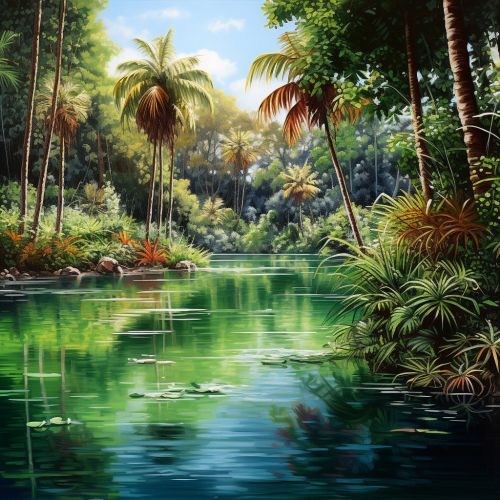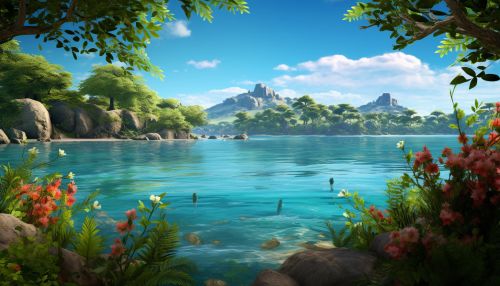Estuaries
Introduction
An estuary is a partially enclosed coastal body of brackish water with one or more rivers or streams flowing into it, and with a free connection to the open sea. Estuaries form a transition zone between river environments and maritime environments and are subject to both marine influences, such as tides, waves, and the influx of saline water; and riverine influences, such as flows of freshwater and sediment. The inflows of both sea water and freshwater provide high levels of nutrients in both the water column and sediment, making estuaries among the most productive natural habitats in the world.


Formation and Types of Estuaries
Estuaries form when a coastal depression or a sinking of the land surface allows sea water to penetrate into the lower reaches of a river. This process is often associated with coastal development along tectonic subduction zones and with the drowning of river valleys due to post-glacial sea level rise.
There are several different types of estuaries, classified by their geomorphology or the variation in salinity and water circulation. These include coastal plain estuaries, tectonic estuaries, bar-built estuaries, and fjord-type estuaries.
Ecology of Estuaries
Estuaries are incredibly dynamic systems, where temperature, salinity, and nutrient concentrations can change dramatically over the course of a day. This variability creates a unique environment that supports a diverse array of plant and animal species.
Estuaries are often characterized by their benthic (bottom) habitats, which can include mudflats, seagrass beds, oyster reefs, and salt marshes. These habitats not only provide critical feeding and breeding grounds for many species of fish and shellfish, but they also serve as important nesting and migratory sites for many species of birds.
Estuaries also play a critical role in nutrient cycling. Nutrients that are carried into the estuary by rivers are often trapped and recycled in the estuary, providing a rich source of nourishment for both estuarine and coastal ocean food webs.
Human Impact and Conservation
Human activities have significant impacts on estuaries. These impacts include pollution (from sewage, agricultural runoff, and industrial discharges), habitat destruction (from dredging, filling, and development), and overfishing.
Despite these threats, estuaries are important resources that provide a range of benefits to people and the environment. They serve as nurseries for many commercially and recreationally important species of fish and shellfish, they protect coastal areas from flooding and erosion, and they provide important recreational opportunities.
Conservation of estuaries is a critical task for environmental scientists and managers. This involves protecting and restoring the habitats that estuaries support, monitoring water quality to ensure that it is safe for both wildlife and people, and managing fisheries to ensure that they are sustainable.
